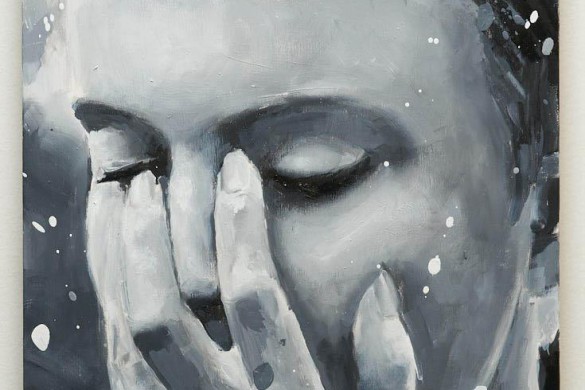Five Famous Canadian Photographers You Should Know
by Lorette C. Luzajic
May is the month of Toronto’s annual Scotiabank Contact Photography Festival, the largest photography festival in the world. This year, the festival is celebrating its 20th year.
Every May, traditional art spaces, along with offices, cafes, and countless other kinds of venues participate in turning the city into a massive gallery where you can see the work of over a thousand photographers from all over the world. It’s an amazing opportunity to experience a range of visual perspectives and discover new photographers.
In honour of celebrating Contact, today we revisit history for five famous Canadian photographers you should know.
William Notman (1826-1891)
After some shady bookkeeping got him ousted from his native Scotland, William Notman landed in Montreal and took up studio photography there. His elaborate staging, such as using wool for snow, and trompe-l’œil bridges and forests, allowed for exciting backdrops for his portraits. Using these sport-settings and parlour props to pose his subjects made them more interesting, in their minds, and he quickly became widely sought by celebrities of the day, like Queen Victoria, Henry Wadsworth Longfellow, Sir John A. MacDonald, and Buffalo Bill. He had multiple studios throughout Canada and the US and could hardly keep up with the public vanity, since selfies wouldn’t exist for another 100 years or so.
Sitting Bull and Buffalo Bill, by William Notman.
Hannah Maynard (1834- 1918)
Hannah Maynard was an important photographer who wore many hats. She lived in Bowmanville, Ontario and learned photography there, but when her husband joined the gold rush in British Columbia, they both moved west and she opened the Mrs. Richard Maynard Gallery. Hannah taught her husband the principles of the art and craft. Like Notman, and as per the fashion of the time, she used elaborate interior props in her studio. But she was also the official police photographer for the Victoria Police Department mug shots. Artistically, she was an innovator, experimenting extensively with lighting and especially with photomontage. She would meticulously cut out hundreds, even thousands, of images to create new pieces composed of all of them. This was before “collage” had even been “invented”- the word being coined later by Picasso and Braque. And when Maynard’s teen daughter died, the tragedy fuelled a creative turn to the ghostly. The self-portrait composites of superimposed multiples take on a spooky surrealism, reflecting the era’s popular enthusiasm for parlour spirituality via séances and mediumship. At this time, Maynard also explored a style that she named “Living Statuary,” where she turned her subjects into stone busts and vases.
Self Portrait by Hannah Maynard.
Reva Brooks (1913-2004)
Polish-Canadian Reva Brooks lost her heart in Mexico. While visiting San Miguel de Allende with her new husband, she began photography and ended up part of a thriving artistic community of painters and photographers, both native Mexican and ex-pats from the north. Mexico predominated her subject matter, and her recognition was driven from New York when Ed Steichen bought and exhibited her at the MOMA. But Brooks’ last solo show was at home in Toronto, at the Art Gallery of Ontario. Her stunning pictures of Mexican women especially, and other portraits and subjects, are woefully underrated. They show compassion, passion, pattern, contrast, atmosphere, and an unerring instinct for composition.
Brothers, by Reva Brooks.
Yousuf Karsh (1908-2002)
At sixteen, witness to massacres and the death of his sister to starvation, Karsh fled the Ottoman Empire, thus surviving the Armenian Genocide, relocating in Quebec with an uncle. His uncle was a photographer and Karsh helped him in his studio. Before long, the uncle recognized his nephew’s talent and arranged for him to apprentice in the States with a portrait photographer. Karsh went on to become one of the greatest portrait photographers of all time.
Karsh’s passion was “to photograph the great in heart, in mind, and in spirit, whether they be famous or humble.” Some of the most iconic portraits in history are from the brilliant, uncanny eye of our Yousuf. These include the best of the best of Churchill, sans cigar, because Karsh snatched it away and snapped the subsequent scowling. Other VIPs that Karsh captured forever include Albert Einstein, Muhammed Ali, Auden, Picasso, Helen Keller, Carl Jung, Pope John Paul the Second, and Humphrey Bogart.
Churchill, by Yousuf Karsh.
Edward Burtynsky (b. 1955)
It’s become a household name, and most Canadians can even spell it. Burtynsky rose to fame through his mammoth, sweeping vistas of industry. Rusty heaps of machinery, dangerous cavities gouged from the earth, towering heaps of rubber and refuse, his work became known as “Manufactured Landscapes.” We are supposed to see these man-made worlds for their ugliness and environmental destruction. Most people do, but I can’t help seeing them the way I see pyramids and similar structures, like monuments as Stonehenge, terrifying and beautiful.
photograph by Edward Burtynsky.
Lorette C. Luzajic
Lorette C. Luzajic is an Art Bomb artist who works in paint, collage, photography, and the written word. She is the editor of The Ekphrastic Review: writing and art on art and writing. Her art has been shown at The Artist Project, the Toronto Outdoor Art Exhibition, the Spoke Club, the Backhouse, the Niagara Artist’s Centre, the Royal Ontario Museum, and as a 20 foot billboard in New Orleans during the Super Bowl. View some of her photography here.


